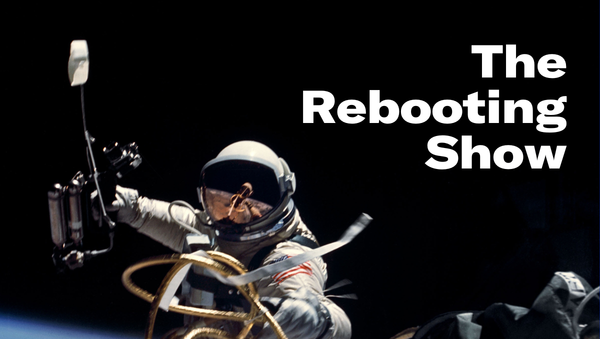The $100m publisher you don't know
Ad Practitioners shows SEO-focused publishing remains a lucrative niche


We’re about to enter out-of-office messages season. I got an early one this week that thanked me for my message but broke the news the recipient would be out for the rest of the summer. Total respect for Europeans. In the meantime, this week:
- A conversation with Greg Powel, CEO of Ad Practitioners, an intent media company that has relaunched the Money brand
- Thoughts on entrepornography
- The Rebooting events
First, a message from my friends at Bombora, who are helping publishers with a critical aspect of building a sustainable business model: Identifying high-value audience segments.

First-party data isn’t enough
The phase out of the third-party cookie has emphasized the need for publishers to collect first-party data. But the reality is no publisher will have enough information on the majority of their users. Many publishers have over 70% of their audience as unknown, presenting a dilemma for publishers if they focus only on first-party data as the bulwark of their post-third-party-cookie strategy. “With third-party cookies going away, you just lost one of the main resources that helped you personalize, outreach and convert,” said Steve Lilly, svp of global data partnerships at Bombora. “And still this transient audience looms. It amazes me how many partners accept this level of unknown, transient audience.”
Check out The Rebooting show on Apple or Spotify for my full conversation with Steve about how publishers can augment their first-party data efforts with a comprehensive digital transformation strategy. Learn more about how Bombora helps publishers on their data journey.

The $100m publisher you didn’t know
I would always remind reporters that “the publishing industry” is not a monolith. There are many types of publishers, often with such different distribution and monetization strategies. Coverage of the media business tends to clump around a certain group of publishers – The New York Times, The Washington Post, Vox Media, BuzzFeed, et al – but the publishing market is broad and deep, so much so that a company like Industry Dive can be worth over $500 million and still, somewhat, fly under the radar.
One of the most solid areas of digital publishing is what’s become known as intent media. In the old days, we called this “SEO.” The basics are taking service content and applying it to algorithmic distribution (usually Google) and marrying it with performance advertising models like affiliate marketing programs that pay for sales leads. SEO plays were always a lucrative niche that were often looked down upon because many cut corners to rank highly and writing content for algorithms, particularly to those who write for a living, can feel unseemly.
That is not to say it isn’t lucrative. Consider:
- Dotdash Meredith is one of the largest digital publishers and now owns brands like Better Homes and Gardens, People and Food & Wine.
- Red Ventures, owner of Bankrate and CNET, is a $2 billion business.
- Recurrent Ventures has raised $400 million.
- NerdWallet generated $379 million in revenue in 2021.
Ad Practitioners is another intent-based publisher in expansion mode. Founded by former Google exec Greg Powel and former SEO software company Moz exec Sam Niccolls in 2016, the company bootstrapped a search-focused business around ConsumersAdvocate.org. It would focus on answering the questions people typed into Google when they were trying to accomplish a task, like figuring out what pet insurance to buy. Each time a visitor asks for a quote request, Ad Practitioners gets $40-50.
In late 2019, Ad Practitioners bought Money.com from Meredith with the plan to run its intent playbook with the personal finance brand. That means more lists of the best credit cards, best savings accounts and, yes, the best pet insurance companies. Those bounties can add up. The entire company, which is based in Dorado, Puerto Rico, is 160 people and Greg describes revenue as “a nine-figure business.”
“We’ve always tried to focus on solving problems affecting a large group of people,” Greg told me on this week’s episode of The Rebooting Show podcast. “Content that is engaging is what people are gravitating towards. People don't want to do all of the research themselves from scratch.”
Some takeaways from our conversation:
Arbitrage works. Paid acquisition is an important part of the Ad Practitioners model – it has spent about $500 million on Google ads in its history. Search for “best credit cards 2022,” and you’ll see why. This kind of high-value intent traffic is very valuable – credit card leads can fetch $100 – that it makes sense. “We use paid media to make sure that we're getting our content in front of as many people as possible who share the same underlying intent and are looking to solve those problems,” Greg said.
Bad sites are a business model problem. Publishers with terrible websites do not have a tech problem; they have a business model problem. The attention-based ad model for general audiences is hard to make work without adopting, well, adversarial tactics. The performance ad model of intent media aligns incentives better since the publisher wants people to get the information they need rather than hijack their attention elsewhere. “The very first thing that we did when we bought Money is we took revenue to absolute zero,” Greg said. “We removed every single form of advertising that was on the website.”
Algorithm dependence is a manageable risk. To put it mildly, there’s a checkered history of publishers relying on algorithms for the overwhelming majority of their distribution. In some ways, that sort of intermediation is a longtime reality of media, as Joe Marchese pointed out the other week. Ad Practitioners look to mitigate that dependence with its paid acquisition as well as licensing deals with the likes of MSN and others. While new channels like TikTok could catch on to eat into Google’s search share, Greg sees the biggest threat of disruption coming from Apple, since its devices are the originator of a big chunk of Google searches.
Check out the full episode with Greg on Apple or Spotify. (Also, please leave a rating and review on Apple.) Thanks again to Bombora for the support.

On building in public
A media exec sent me the above and asked my take, although he led the question by calling it a “ridiculous” tweet., saying it “is becoming the predominant POV amongst young people because everyone who is successful and not super active on social media is not included in their media consumption” Needless to say this person is not a build-in-public hustle porn type.
I tend to go back and forth on the build-in-public ethos. On the one hand, as a journalist, I always felt companies were overly secretive, particularly in areas like publishing where there’s no super secret strategy but a lot of unglamorous execution. Anytime someone tells me they “can’t disclose revenue as a private company,” I ask why. I mean, they can, but they choose not to do so. I always appreciated how Industry Dive’s Sean Griffey laid out its growth, both revenue and EBITDA. Seemed to work out for him.
But the point being made was that there’s this current vibe of what I call entrepornography that a major part of building something new involved endless self-promotion, usually involving a whole lot of Twitter but also with plenty of conference speaking gigs. As always, it’s good to remember that Twitter is not real life and most well-adjusted people stay far away from it.
Leaving aside the clear group of self-identified #entrepreneurs, who seem to like talking about #entrepreneurship rather than doing it, I think there’s a lot of value in being open about what you’re doing and why. The secretive approach, to me, was usually a dodge because the CEO wasn’t comfortable explaining what they believed in and wanted to accomplish, either because they truly had no idea or it was simply “get rich.” Openly and clearly communicating what you’re trying to accomplish, and your progress, seems to me a good way to gain leverage in the market, so long as it doesn’t come at the expense of the unglamorous and frustrating day-to-day work of pushing the ball forward inch by inch.

Reminder: Sign up for invites to The Rebooting events
Speaking of building, I’m in the midst of finalizing my plans for expanding The Rebooting. One of the areas I’m targeting is in-person (maybe some virtual) gatherings. Like this newsletter’s goal, I want the events to be smaller but high value. There’s a lot of value in being able to connect people with each other. Thanks to everyone who gave feedback on future events. One idea that has already sprung from it is to do a lunch or afternoon event in Washington, DC, since there are now so many thriving and promising publishers there. I put together a very basic five-field form that would greatly help me as I figure this critical part out.

Thanks so much for reading in late July. Send me a note with your feedback or topics you’d like to see covered: bmorrissey@gmail.com.




